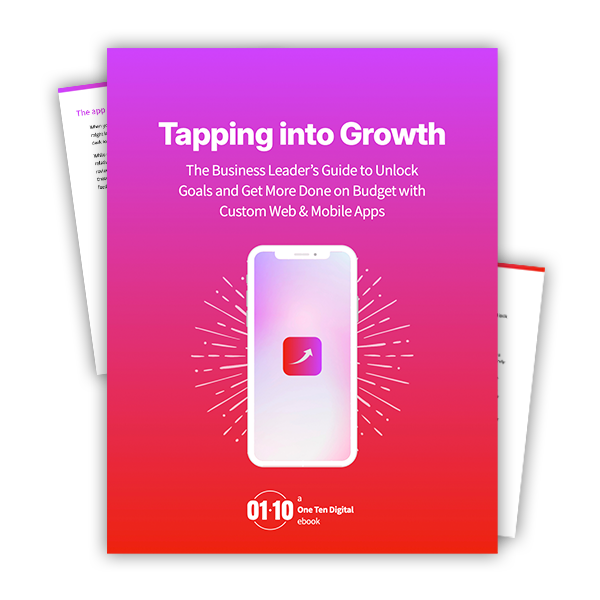Picture this: you’re drinking coffee at your kitchen table when the idea for the next big thing suddenly pops into your head. Or maybe you’ve labored through the same annoying task for months (or years!) and finally decided it’s time for a better way.
You jot down a few notes or sketch a rough page or screen. But that’s where many people end up stumped – what’s next? Where do you start? And how long will it take?
Building a minimum viable product – or MVP – for your app can help answer those questions. With an MVP, the very first version of the app contains only as many features as absolutely necessary to satisfy the needs of your earliest users (known in the tech world as “early adopters”).
Whether you’re looking to launch a web or mobile app, using the MVP approach has some exciting benefits:
- You can move from a great idea to a great product faster. Starting light can help you beat competitors to the market.
- You’ll hear feedback earlier. Early adopters love to give you thoughts about what they love – and what they don’t.
- You’ll save time and money by only building what matters most to your customers. Why spend money on something people don’t need or won’t use?
- You can make revenue faster. Upfront or subscription revenue on paid apps can help you finance future versions. (Or you can set up a beta testing group for early adopters to hook new customers and generate buzz.)
Let’s look at an example of someone who wants to build a new photo-sharing app. The first step for an MVP is to figure out what’s absolutely essential – and what separates your product from competitors. In a photo-sharing app, you’ll need to display photos. You’ll also need a way to share the photos with friends. But do you need to support five or ten ways of sharing right up front? Or do you need a way to buy prints or show where the photos were taken on a map? Probably not! You can choose to add those in later after you start to hear from your customers.
Once your MVP is out in the wild, be prepared for feedback – and don’t take it personally. Many of your customers will ask why you don’t have Feature X, and they might even say they don’t find value in your app without it. That kind of data is invaluable. If you hear from ten out of ten customers that they want a feature, it’ll probably end up on the top of your priority list. But if you hear from only one of a hundred or a thousand, is it really worth your time and money?
Using the minimum viable product approach can give you a head start on the road to success with your app. There’s no better feeling than sharing your idea with the world, and an MVP helps you feel confident that you’re creating something people will love!
Photo by Kelly Sikkema on Unsplash


